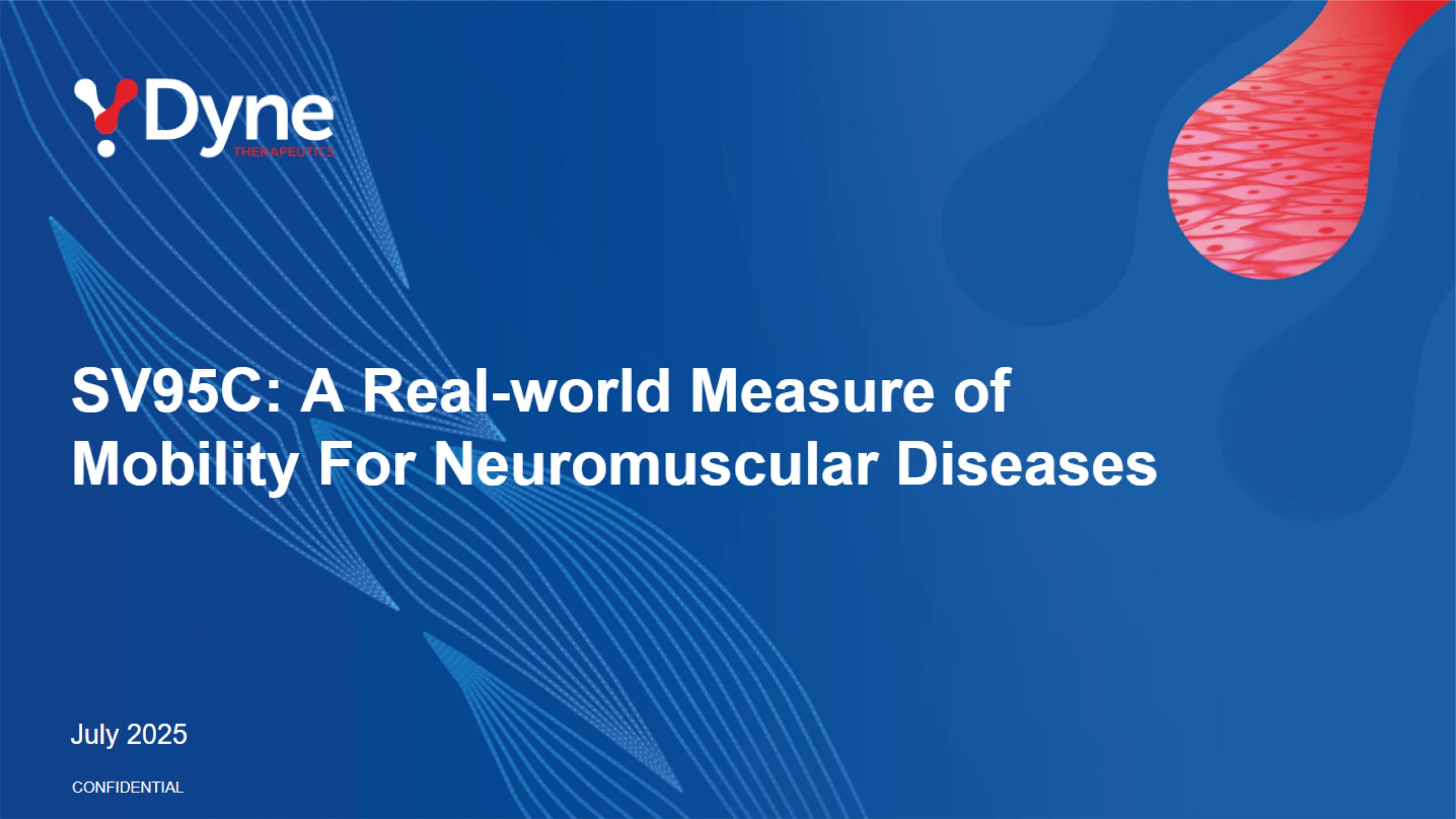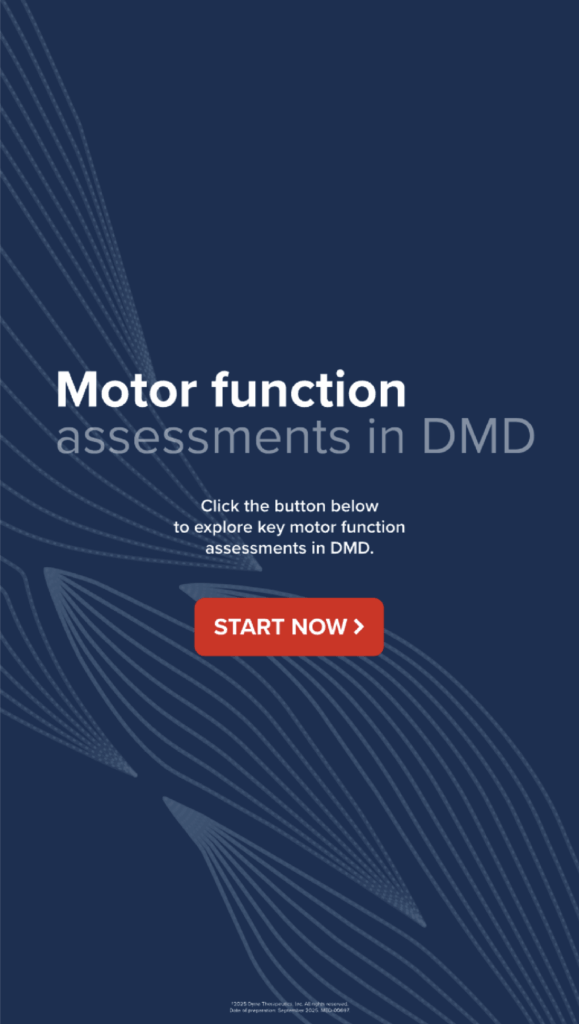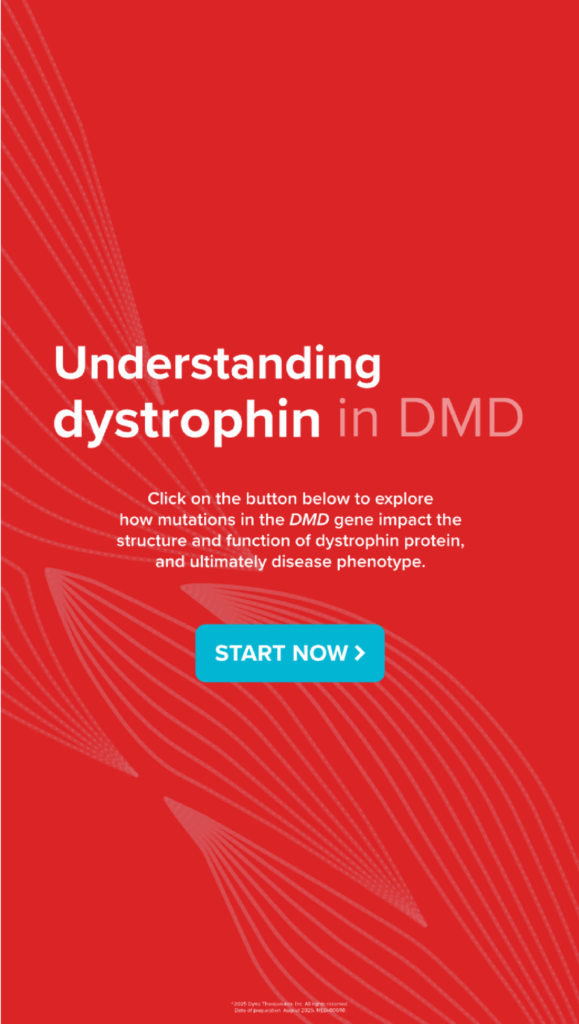Duchenne muscular dystrophy (DMD)
Duchenne muscular dystrophy (DMD) is a rare, X-linked, progressive neuromuscular disorder caused by mutations in the DMD gene leading to an absence of functional dystrophin protein, which is essential for muscle structure, function, and preservation.1–11 DMD is a multisystem disease that affects skeletal, pulmonary, and cardiac muscles as well as the brain and gastrointestinal tract, and individuals with DMD typically exhibit progressive muscle weakness followed by loss of ambulation, often succumbing to life-threatening complications due to respiratory or cardiac failure.12–19
SV95C: A real-world measure of mobility for neuromuscular diseases

Overview of SV95C and its use in clinical trials.
1. Broomfield J, et al. Neurology. 2021;97(23):e2304–e2314; 2. Emery AE. Neuromuscul Disord. 1991;1(1):19–29; 3. Koenig M, et al. Cell. 1987;50(3):509–517; 4. Marden FA, et al. Skeletal Radiol. 2005;34(3):140–148; 5. Mayer OH, et al. Pediatr Pulmonol. 2015;50(5):487–494; 6. Muntoni F, et al. PLoS One. 2019;14(9):e0221097; 7. Claflin DR, Brooks SV. Am J Physiol Cell Physiol. 2008;294(2):C651–C658; 8. Ervasti JM, Campbell KP. J Cell Biol. 1993;122(4):809–823; 9. Hoffman EP, et al. Cell. 1987;51(6):919–928; 10. de Feraudy Y, et al. Ann Neurol. 2021;89(2):280–292; 11. Ohlendieck K, et al. Neurology. 1993;43(4):795–800; 12. Brooke MH, et al. Neurology. 1989;39(4):475–481; 13. McDonald CM, et al. Am J Phys Med Rehabil. 1995;74(5):S70–S92; 14. Lionarons JM, et al. Life (Basel). 2021;11(8):772; 15. MacLeod M, et al. Arch Dis Child. 2003;88(4):347–349; 16. Sayed MM, et al. Middle East Current Psychiatry. 2022;29(1):76; 17. Taylor PJ, et al. PLoS One. 2010;5(1):e8803; 18. Bello L, et al. Neurology. 2016;87(4):401–409; 19. Mendell JR, et al. J Neuromuscul Dis. 2021;8(4):469–479.

